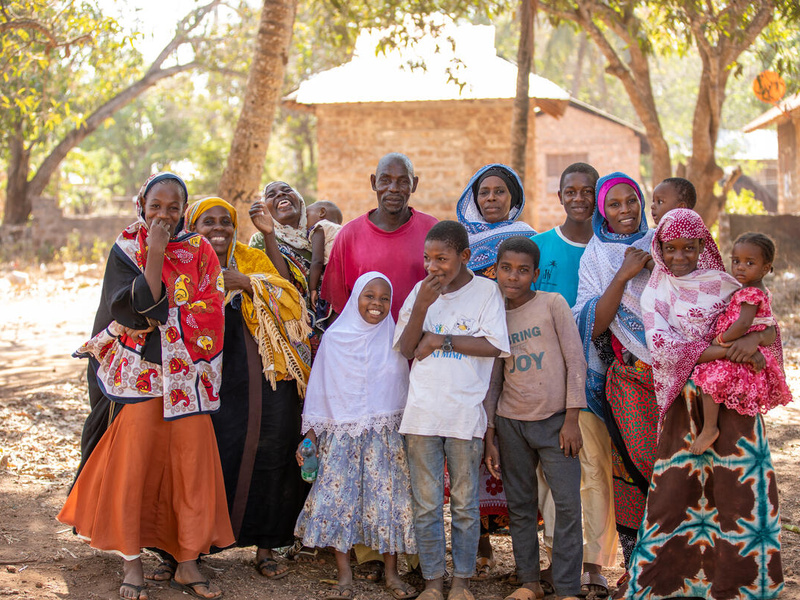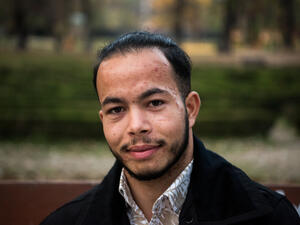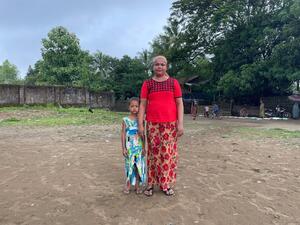Ending statelessness
Ending statelessness
UNHCR is working to end statelessness, while also protecting people who are currently stateless.
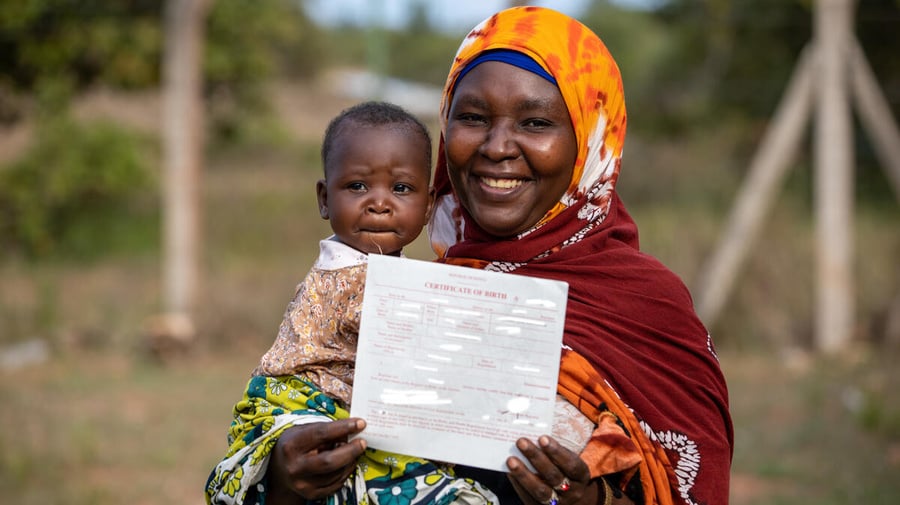
Asha proudly displays her daughter's birth certificate. This vital document establishes her daughter's Kenyan nationality, protecting her from being at risk of statelessness.
Stateless people may face a lifetime of obstacles trying to access basic rights and services. They often are not able to go to school, see a doctor, work legally, open a bank account, buy a house or even get married. This creates and perpetuates generational cycles of poverty and marginalization.
At the end of June 2025, UNHCR’s statistical reporting counted 4.4 million stateless people. However, as many stateless people live on the fringes of society and no data is available for a considerable number of countries, the actual figure is believed to be much higher.
At UNHCR, the UN Refugee Agency, we are determined to end statelessness. We help stateless people to acquire a nationality and work to prevent new cases of statelessness from emerging. We do this by working with governments to strengthen and change nationality laws, policies and procedures, including measures to identify stateless persons. We also work with States to protect people who are currently stateless by ensuring that they can exercise their human rights until they acquire a nationality.
Addressing statelessness will also help the international community achieve the Sustainable Development Goals, including reducing inequality (SDG10) and providing legal identity for all (SDG16.9).
"Those who have been born or left stateless face a devastating legal limbo. Their lives are marked by exclusion, deprivation and marginalization."
Understanding statelessness
How does nationality work?
People usually acquire a nationality automatically at birth, either through their parents or the country in which they were born. Sometimes, however, a person must apply to become a national of a country.
How does someone become stateless?
Statelessness occurs when an individual is not recognized as a citizen by any country, including the country in which they, and perhaps generations of their family, were born.
If nationality laws are not carefully drafted, some people can fall through the cracks and be left stateless. Additionally, some countries' laws may intentionally exclude people from citizenship, discriminating against minority communities based on race or religion, or preventing mothers from passing their nationality to their children. People can also be left stateless when a new State emerges or territory is transferred from one State to another. Individuals can also face risks of statelessness if they lack a birth certificate or other document which proves a link to the State.
What can be done to end statelessness?
What can States do to end statelessness?
Governments determine who their nationals are. Likewise, States can also adopt laws and policies to ensure statelessness is prevented and that stateless persons are identified, protected and that their situation is resolved. No one should be denied, deprived of, or unable to acquire a nationality based on discriminatory grounds, which is a core principle of international human rights law.
The Global Action Plan to End Statelessness 2.0 establishes a global framework of 11 priority actions to be undertaken by States to resolve existing situations of statelessness, prevent new cases from emerging, and better identify and protect stateless populations. The 11 actions to end statelessness are:
- Action 1. Resolve major situations of statelessness
- Action 2. Ensure that no child is born stateless
- Action 3. Remove gender discrimination from nationality laws
- Action 4. Prevent denial, loss or deprivation of nationality on ethnic, racial, religious, political and other discriminatory grounds
- Action 5. Prevent statelessness in cases of State succession
- Action 6. In migratory context, determine statelessness and protect stateless persons and facilitate their naturalization
- Action 7. Ensure birth registration for the prevention of statelessness
- Action 8. Issue nationality documentation to those with entitlement to it to prevent statelessness
- Action 9. Accede to the UN Statelessness Conventions
- Action 10. Improve quantitative and qualitative data on stateless populations
- Action 11. Ensure that stateless persons can enjoy their rights.
Learn more about the Global Action Plan to End Statelessness 2.0
What is UNHCR doing to end statelessness?
UNHCR works with and supports governments to identify, reduce and prevent statelessness, while also protecting people who are currently stateless.
UN Conventions on Statelessness
There are two United Nations Conventions on Statelessness. They seek to protect stateless people and eliminate statelessness globally. UNHCR encourages States to accede to the conventions. By doing so, countries commit to protect stateless people and reduce statelessness within their countries and to bring their laws and policies in line with the provisions of the conventions.
Text and media 61
When we were told we were not Kenyans, it really hurt. Where were we to go? We were born and raised here; we knew no other home.
Rashid, a member of the Pemba community in Kenya, endured a lifetime of challenges due to being stateless. He could not open a bank account, marry his wife legally, or travel freely. Many families in his community also struggled to enroll their children in school because they lacked the necessary national birth certificates.
In 2023 Kenya recognized the Pemba as citizens of the country. For Rashid and his family, this was a life-changing moment. “I am grateful that my children will now have national IDs – they will be able to seek opportunities that will enable them to sustain themselves financially and they can access any part of the country just like any other Kenyan,” he says.
The Global Alliance to End Statelessness
Launched in 2024, the Global Alliance to End Statelessness is a collaborative multistakeholder platform led by UNHCR. Its vision is to create “a world free from statelessness where everyone enjoys the right to a nationality without discrimination.” The initiative is part of the UN Secretary General’s ‘Our Common Agenda’ and aligned with the Sustainable Development Goals. The Alliance has over 140 members, representing States, CSOs, stateless-led organizations, UN agencies and others.
The Global Alliance aims to accelerate the implementation of existing and new pledges by States, establish strong and interconnected regional networks, strengthen engagement with stateless-led organizations as agents of change, and promote awareness and understanding of statelessness among a wider range of stakeholders
2014–2024 #IBelong Campaign
The 2014–2024 #IBelong Campaign was a 10-year UNHCR initiative to end statelessness through legal advocacy and collaboration with governments and partners worldwide. The campaign generated renewed commitment from States, resulting in greater progress over the past ten years than in previous decades, including:
- Half a million people granted citizenship as several countries resolved long-standing situations of statelessness
- A steady increase in the number of accessions to the 1954 and 1961 Statelessness Conventions
- Governments have strengthened their legal frameworks on the right to nationality and protection of stateless persons
- Improved access to more reliable data to inform shared efforts to end statelessness.
During the #IBelong Campaign decade, States and other actors have also made more than 400 pledges – at events such as the two Global Refugee Forums – to address statelessness. These achievements formed a solid foundation for future collaboration and action to end statelessness.
Learn more about the #IBelong Campaign to End Statelessness
Documents and resources

The multi-stakeholder Global Alliance brings together diverse partners to accelerate solutions to statelessness through collaboration, inclusivity, and centring stateless people’s voices.

Refworld, UNHCR's global library of legislation, case law and policy guidance, hosts a range of statelessness resources.
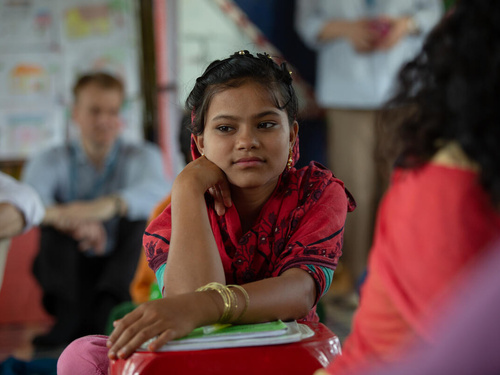
The plan sets global objectives to advance statelessness work.

The 10-year #IBelong Campaign drove global action to end statelessness, helped over half a million people gain nationality and strengthened legal frameworks worldwide.

